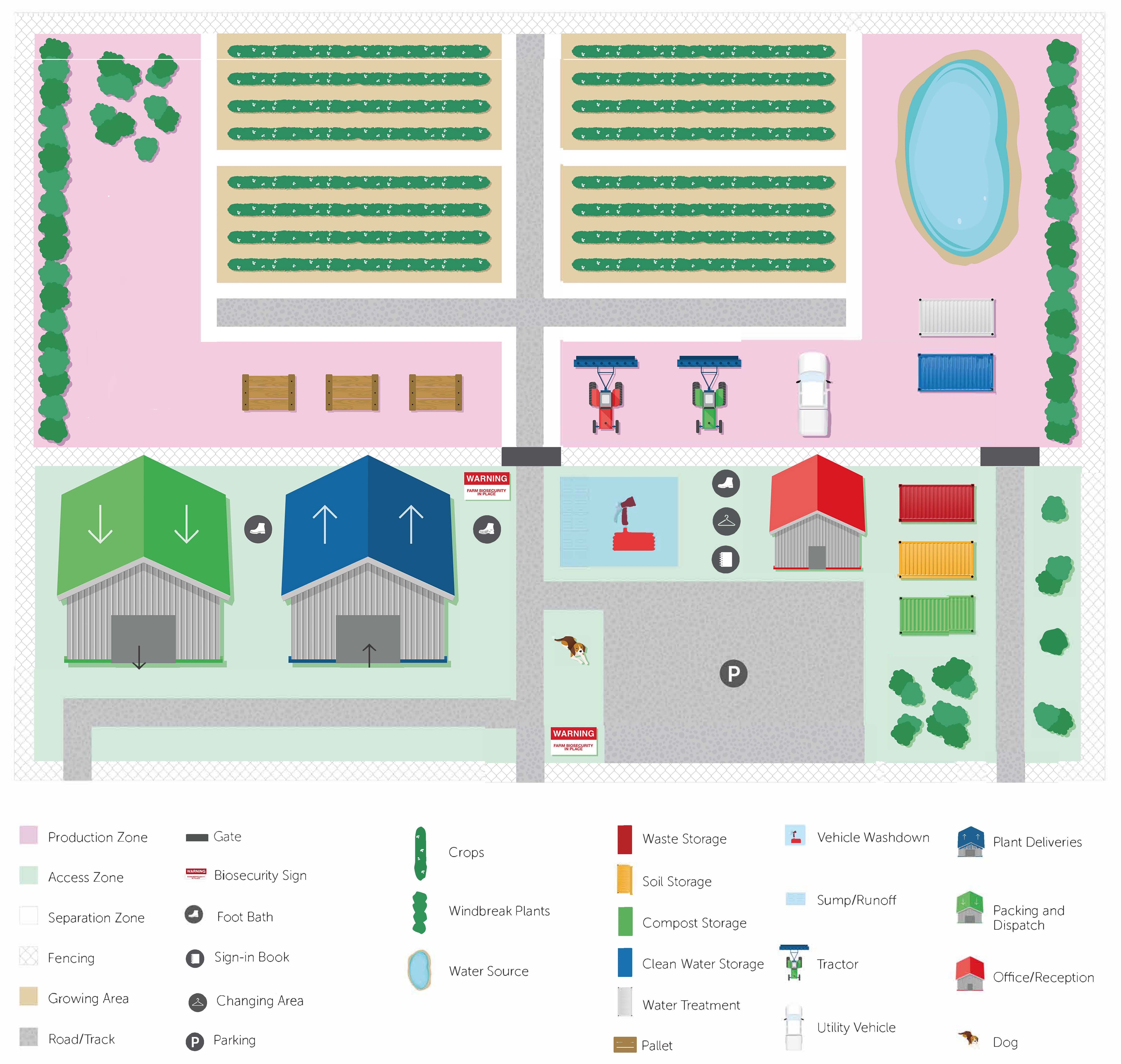Biosecurity gate signs provide an immediate signal to all visitors to your property that you take biosecurity seriously – and so should they. These signs indicate to visitors that there are movement restrictions in place, including property zoning to protect your production areas.
Dividing a farm into separate areas based on the level of biosecurity needed to minimise the possibility of pests and diseases entering and moving around the property is known as zoning. Zoning will only work if visitors are aware of the zones and the rules associated with each.
A sign at your main entrances provides an immediate signal to visitors, contractors, workers and family that you have biosecurity and hygiene protocols in place and want them observed. It will, of course, have to be followed up by advice on the requirements for each zone, which may also be communicated by further signs at checkpoints.
Property zoning is a powerful tool for protecting your property from weeds, pests and diseases. Many farms already do this in an informal way, but it is a simple matter to make it a more formal system.
The first zone on any property is the Access Zone. Visitors, staff and deliveries can come and go, with no need to clean their vehicles, because they are parked in designated areas near the farm entrance, office or house.
The all-important Farming (Production) Zone is what you are trying to protect. In between the Access Zone and the Farming Zone is the Separation Zone. This zone is the roadway for essential vehicles that need to come on-farm. This could include trucks picking up crop products or livestock, food, fertiliser or fuel deliveries. Separation zones might include the tracks and pathways for essential vehicles to access different areas on-farm.

Map showing the relative positions of some facilities found on a farm in relation to the best place to put features including signs, parking and wash-down areas. Green represents access zones, grey represents separation zones and pink represents farming or production zones. Source: AUSVEG, Plant Health Australia
Where one zone meets the next – such as where a separation zone joins a production zone – there is a transition from one level of biosecurity to another. You might ensure that only designated vehicles are used in the Farming Zone, or provide and enforce use of a wash-down facility prior to entering the Farming Zone to clean off any dirt, plant matter and animal faeces that could harbour all manner of biosecurity threats.
Every farm is different, so it is useful to start with a map of your property to consider risk areas and the best places to locate biosecurity zones with different protocols.
New or replacement biosecurity gate signs are available free from the grains biosecurity officer in your state.
More information: Jim Moran, 03 5430 4479, jim.moran@agriculture.vic.gov.au; Farm Biosecurity

























































